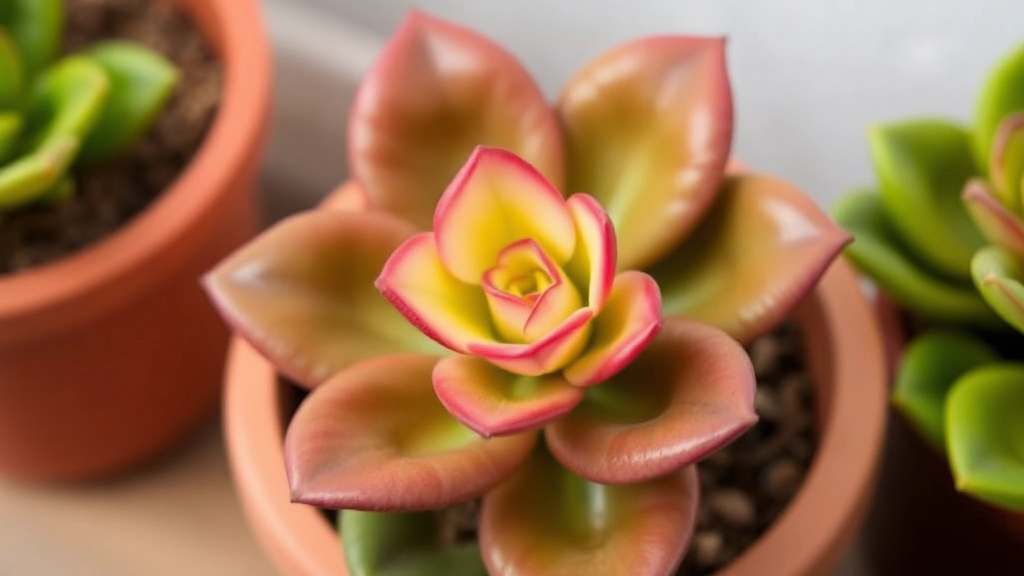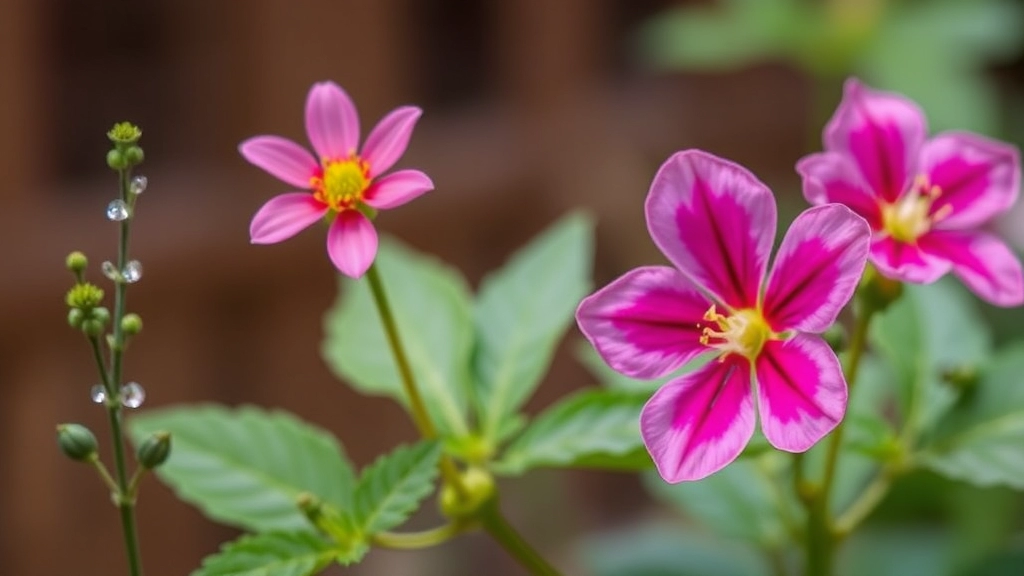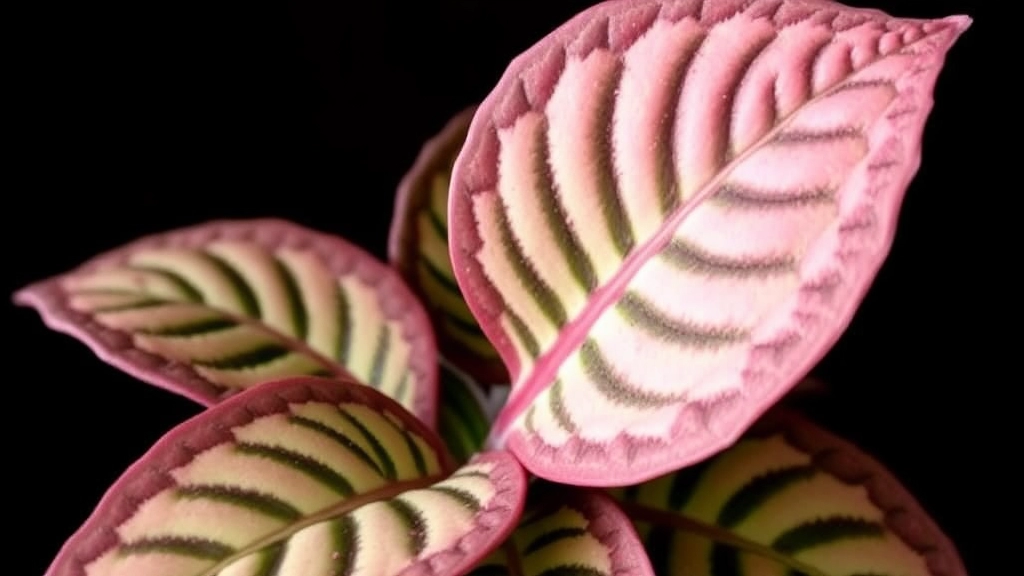Elephant Ear Kalanchoe Beharensis
Overview
Elephant Ear Kalanchoe Beharensis, also known as Velvet Leaf, is a stunning succulent that can add a touch of exotic flair to any indoor or outdoor space. To keep your Kalanchoe Beharensis thriving, it’s crucial to understand its care requirements. This plant loves bright, indirect sunlight and prefers well-draining soil. Watering should be done sparingly, allowing the soil to dry out between waterings, especially during winter months.
Propagation
Propagation of Elephant Ear Kalanchoe is relatively straightforward. You can propagate using stem or leaf cuttings, or by using offsets and seeds. Ensuring the cuttings are dry before planting them in soil can prevent rot. With the right care and attention, your Kalanchoe Beharensis can flourish, adding unique beauty to your plant collection.
Care Requirements for Kalanchoe Beharensis
Are you struggling to keep your Kalanchoe Beharensis thriving? You’re not alone. Many plant enthusiasts face challenges in providing the right care for this unique succulent.
Light Conditions
Kalanchoe Beharensis, commonly known as Elephant Ear Kalanchoe, flourishes in bright, indirect sunlight.
- Ideal Placement: A south or west-facing window is perfect.
- Avoid Direct Sunlight: Too much direct sun can scorch the leaves.
Watering Needs
Understanding how to water your Kalanchoe is crucial for its health.
- Soil Moisture: Allow the top inch of soil to dry out between waterings.
- Frequency: Water less in winter; once every 2-3 weeks is often sufficient.
Temperature and Humidity
Kalanchoe Beharensis prefers a stable environment.
- Temperature Range: Ideally, keep it between 18°C to 24°C. For more details on maintaining optimal conditions, check out the ideal temperature for Kalanchoe Blossfeldiana growth.
- Humidity Levels: This plant thrives in low humidity, making it perfect for most indoor settings.
Fertilization
Feeding your Kalanchoe can boost its growth.
- Type of Fertilizer: Use a balanced, water-soluble fertilizer.
- Frequency: Fertilize every 4-6 weeks during the growing season (spring and summer). For more tips, see our best soil for Kalanchoe Blossfeldiana care tips.
Pruning and Maintenance
Regular maintenance helps keep your plant healthy.
- Remove Dead Leaves: This prevents disease and promotes airflow.
- Shape the Plant: Prune to maintain its desired shape and size.
Propagation Techniques for Elephant Ear Kalanchoe

So, you’ve got your Elephant Ear Kalanchoe and you’re thinking about propagating it? Great choice! It’s a fantastic way to expand your collection or share with friends.
Why Propagate?
Many folks wonder if they should even bother propagating their plants. Well, here’s the scoop:
- Cost-effective: Why buy new plants when you can grow your own?
- Fun: Watching new plants grow is super rewarding.
- Sharing: It’s a lovely gift for friends or family.
Methods for Propagation
There are a few easy methods to propagate your Kalanchoe. Let’s break them down:
- Leaf Cuttings:
- Choose a healthy leaf from the parent plant.
- Cut it cleanly at the base.
- Let it dry for a day or two until the cut end calluses.
- Place it in well-draining soil, water lightly, and wait for roots to form.
- Offsets:
- Look for small plantlets around the base of the parent.
- Gently separate them from the main plant.
- Pot them in their own containers with suitable soil.
- Stem Cuttings:
- Cut a healthy stem a few inches long.
- Remove the lower leaves and let it dry for a day.
- Plant it in soil and keep it moist but not soggy.
Tips for Success
- Light: Ensure your cuttings get bright, indirect light.
- Humidity: A little humidity helps, so consider a plastic bag over your pot for a mini greenhouse effect.
- Patience: It can take a few weeks for roots to develop, so don’t rush it.
Common Pests, Diseases, and Solutions
As we delve deeper into the care of Kalanchoe Beharensis, it’s essential to address a significant concern for many plant enthusiasts: pests and diseases. Understanding these challenges allows for better preparation and proactive measures.
Common Pests
- Mealybugs
- These tiny, white, cotton-like pests can be found hiding in the leaf axils.
- They suck the sap from the plant, leading to wilting and yellowing.
- Spider Mites
- Often found on the undersides of leaves, these pests can cause stippling and webbing.
- They thrive in dry conditions, making humidity control crucial.
- Aphids
- Small and green, these pests can cluster on new growth.
- They can transmit diseases and cause distortion in leaves.
Common Diseases
- Root Rot
- Caused by overwatering, root rot can be fatal.
- Symptoms include yellowing leaves and a mushy root system.
- Powdery Mildew
- This fungal disease appears as white powder on leaves.
- It thrives in high humidity and poor air circulation.
Solutions
- Prevention is Key
- Regularly inspect your Kalanchoe for signs of pests.
- Maintain good air circulation and avoid overcrowding plants.
- Natural Remedies
- For mealybugs, use a cotton swab dipped in rubbing alcohol to remove them.
- Spider mites can be controlled with neem oil or insecticidal soap.
- Water Management
- Ensure well-draining soil and pots to prevent root rot. For more details, check out the best soil for Kalanchoe Blossfeldiana.
- Water only when the top inch of soil feels dry.
- Fungal Treatments
- For powdery mildew, increase airflow around the plant and consider using a fungicide if necessary. You can learn more about maintaining healthy plants in the optimal care for Kalanchoe Blossfeldiana.
Growth Patterns and Flowering Habits

Understanding the growth patterns and flowering habits of Kalanchoe beharensis, commonly known as Elephant Ear Kalanchoe, can significantly enhance your gardening experience.
Growth Patterns
Kalanchoe beharensis exhibits a unique growth habit that is visually captivating. Here are some key points to consider:
- Height and Structure: This succulent typically grows between 2 to 4 feet tall, developing a sturdy, upright structure.
- Leaves: The large, fleshy leaves are serrated and can reach up to 12 inches long, giving the plant its distinctive appearance.
- Stem Growth: As the plant matures, it may produce a thick, woody stem, which adds to its architectural appeal.
Flowering Habits
Many gardeners wonder when and how often Kalanchoe beharensis will flower. Here’s what you need to know:
- Blooming Season: This plant usually flowers in late winter to early spring, provided it receives adequate sunlight.
- Flower Appearance: The flowers are small, tubular, and typically appear in clusters, showcasing hues ranging from yellow to reddish-orange.
- Pollination: While Kalanchoe can self-pollinate, cross-pollination can lead to more vibrant blooms.
While the flowering of Kalanchoe beharensis may not be its main attraction, the unique growth patterns and occasional blooms can still provide a delightful surprise in your indoor or outdoor garden.
When it comes to ensuring your Kalanchoe Beharensis thrives, potting and soil choice play a pivotal role. Many enthusiasts often wonder about the best practices for potting and repotting this unique succulent.
### Potting Essentials
– **Container Selection:**
– Choose a pot with drainage holes.
– Terracotta pots are ideal as they allow moisture to evaporate.
– **Soil Type:**
– Use a well-draining cactus or succulent mix.
– You can also create your own by mixing regular potting soil with perlite or coarse sand.
– **Pot Size:**
– Start with a pot that is slightly larger than the root ball.
– Avoid oversized pots, as they can retain excess moisture.
### Repotting Guidelines
– **Timing:**
– Repot during the spring when the plant is actively growing. This helps reduce transplant shock.
– **Steps for Repotting:**
– Gently remove the plant from its current pot.
– Shake off excess soil from the roots.
– Inspect for any damaged roots and trim them.
– Place the plant in the new pot and fill with fresh soil.
– **Post-Repotting Care:**
– Water sparingly for the first week to allow the roots to settle.
– Ensure the plant is in a location with adequate light.
### Soil Recommendations
– **pH Level:**
– Aim for a slightly acidic to neutral pH (6.0 to 7.0).
– **Nutrient Needs:**
– Kalanchoe Beharensis does not require heavy feeding.
– A diluted, balanced fertilizer can be applied during the growing season.
For more detailed tips on soil and care, check out the [best soil for Kalanchoe Blossfeldiana](https://planthq.org/best-soil-for-kalanchoe-blossfeldiana-care-tips/) and the [complete care guide for Kalanchoe Blossfeldiana](https://planthq.org/complete-care-guide-for-kalanchoe-blossfeldiana-succulent/).
Best Practices for Indoor and Outdoor Cultivation of Kalanchoe Beharensis
So, you’re ready to dive into the world of Kalanchoe Beharensis, right? Whether you’re nurturing it indoors or letting it bask in the sun outside, there are some key practices you’ll want to keep in mind.
FAQs on Elephant Ear Kalanchoe (Kalanchoe Beharensis)
What are the benefits of propagating Elephant Ear Kalanchoe?
Propagating Elephant Ear Kalanchoe is cost-effective, fun, and allows you to share plants with friends and family. It’s a rewarding way to expand your collection without purchasing new plants.
What are the common methods for propagating Kalanchoe Beharensis?
The common methods include:
- Leaf Cuttings: Select a healthy leaf, let it dry until the cut end calluses, and then plant it in well-draining soil.
- Offsets: Separate small plantlets from the base of the parent plant and pot them in their own containers.
- Stem Cuttings: Cut a healthy stem, remove the lower leaves, let it dry, and plant it in soil.
How should I care for Kalanchoe cuttings to ensure successful propagation?
Ensure your cuttings receive bright, indirect light, maintain a bit of humidity (a plastic bag over the pot can help), and be patient as it can take a few weeks for roots to develop.
What are the growth patterns of Elephant Ear Kalanchoe?
Elephant Ear Kalanchoe typically grows between 2 to 4 feet tall with a sturdy, upright structure. Its large, fleshy leaves can reach up to 12 inches long, and as it matures, it may develop a thick, woody stem.
When does Kalanchoe Beharensis flower?
Elephant Ear Kalanchoe usually flowers in late winter to early spring, provided it receives adequate sunlight. The flowers are small, tubular, and appear in clusters with hues ranging from yellow to reddish-orange.
Can Kalanchoe Beharensis self-pollinate?
Yes, Kalanchoe Beharensis can self-pollinate, but cross-pollination can lead to more vibrant blooms.
What is the main attraction of Kalanchoe Beharensis?
While its flowering may not be the main attraction, the unique growth patterns, including its large serrated leaves and occasional blooms, provide a delightful surprise in any garden setting.
References
-
How to Grow and Care for Kalanchoe Beharensis
-
Methods for Propagating Kalanchoe Plants
-
Kalanchoe: The Complete Guide
